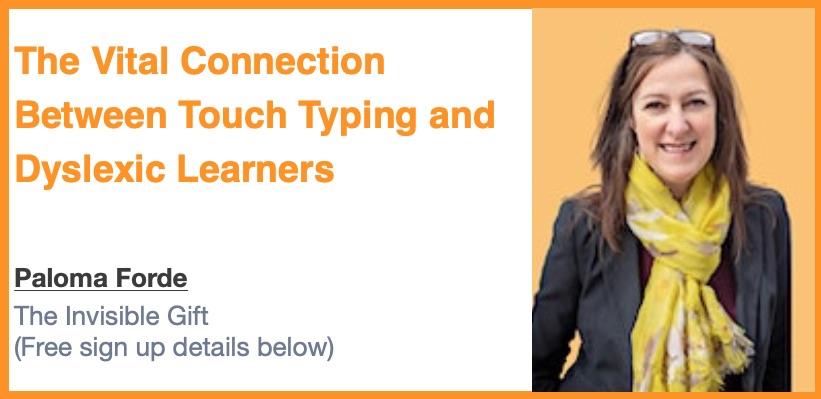
FREE WEBINAR: October 5th.
Dyslexia: Ultimate Success in the Classroom and Beyond!
In today's digital age, touch typing has become more than just a convenient skill; it's a powerful tool for learning and productivity. Touch typing, the ability to type without looking at the keyboard, offers significant benefits for individuals with dyslexia, making it an invaluable asset in their educational journey.
Enhanced Focus and Comprehension: Dyslexic learners often struggle with reading and writing due to difficulties in processing written information. Touch typing reduces the cognitive load associated with searching for keys, allowing dyslexic students to concentrate more on the content they're working on. This heightened focus can lead to better comprehension and retention of information.
Working Memory Links: Touch typing also plays a crucial role in supporting working memory. For dyslexic learners, the cognitive load associated with locating keys and typing slowly can overwhelm their working memory capacity, making it challenging to process and retain information effectively. Touch typing, with its automatic and fluid typing process, lightens this load, allowing individuals to focus more on the content and tasks at hand. By reducing the mental effort required for typing, touch typing frees up valuable working memory resources, enhancing their ability to organise thoughts, solve problems, and engage in complex cognitive tasks more efficiently. This improved working memory capacity contributes significantly to their overall cognitive development and academic success.
Writing Support: For dyslexic individuals, forming letters and words on paper can be challenging. Touch typing eliminates the physical act of writing, making it easier for dyslexic learners to express their thoughts coherently. As a result, they can more effectively convey their ideas in writing, boosting their confidence and performance.
Increased Productivity: Touch typing significantly enhances typing speed and accuracy. Dyslexic learners can complete assignments and tasks more efficiently, reducing frustration and fatigue associated with traditional hunt-and-peck typing methods. This newfound efficiency encourages self-motivation and a sense of accomplishment.
In conclusion, touch typing is not only a valuable skill for general computer use but also a critical support tool for dyslexic learners. It empowers them to overcome obstacles related to written communication and information processing.
By embracing touch typing, dyslexic students can unlock their full potential and navigate the educational landscape with greater confidence and success. For more information on our upcoming webinar being held on October 5th and for FREE sign up:
Dyslexia: Ultimate Success in the Classroom and Beyond!
Copyright KAZ Type Limited 2025. KAZ is a registered trade mark of KAZ Type Limited.
Developed by : STERNIC Pvt. Ltd.